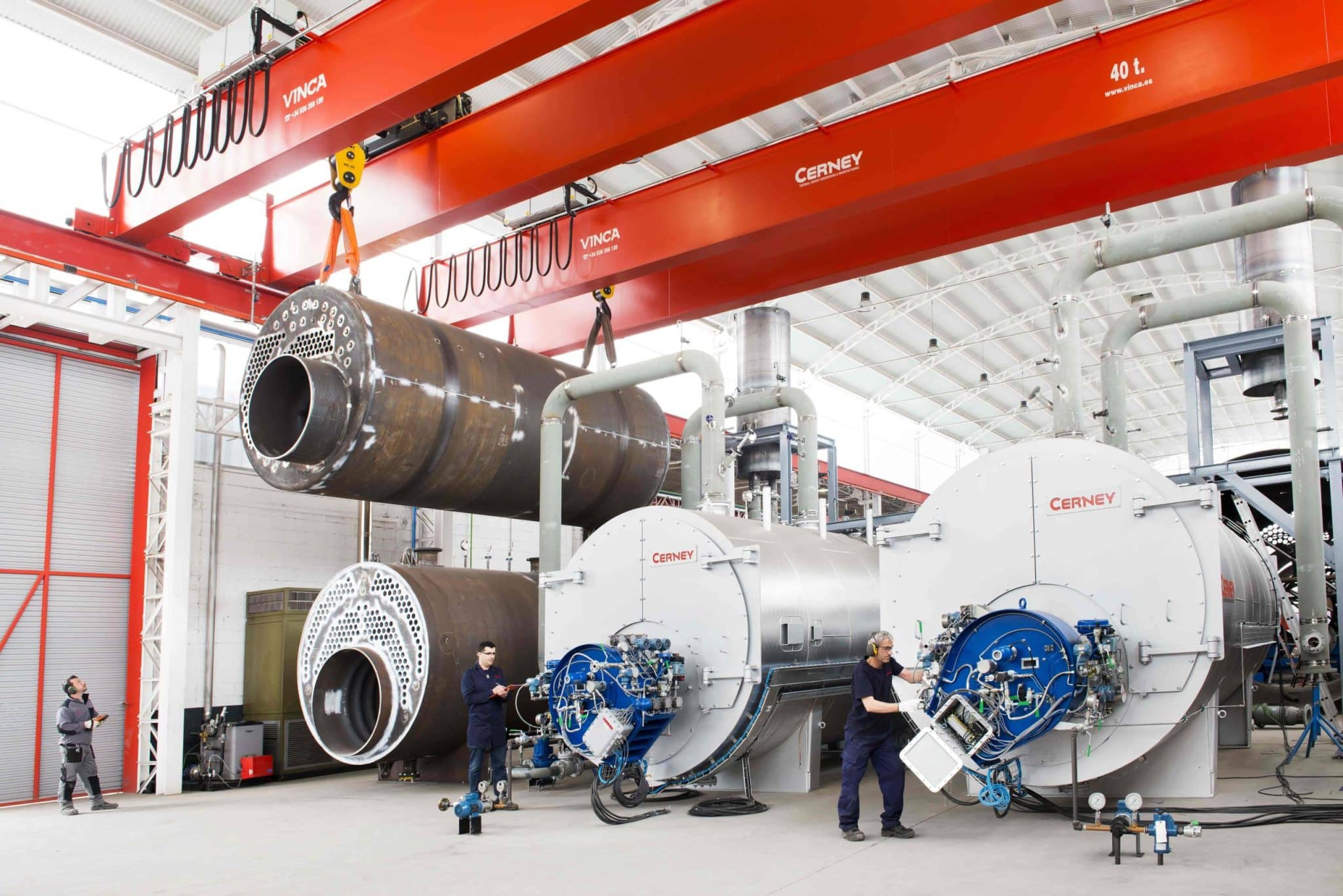The assembly of this equipment must be carried out by a qualified and accredited installer. Boilers are pressure equipment, so it is necessary to consider the specific legislation.
According to Royal Decree 809/2021 approving the Pressure Equipment Regulations, if the fire-tube boiler is second class, it will be necessary to present and approve a project for installation. The classification criteria depend on the degree of danger, which is directly related to the maximum allowable pressure of the fire-tube boiler and its volume.
How the type of boiler class influences the installation
First-class boilers. It is considered a lower risk. It does not require an installation project, but a technical report must be delivered. This must include elements such as load plan, room plan (including measurements, separation of elements, and safety distances), piping, and instrumentation plan…
Second-class boilers. They require the presentation and approval of a project. The project must include next information: a description of the process carried out in the installation, details of the installation company and identification of its authorization, and technical characteristics of the pressure bodies.
Factors of design to take into accoun
Location: depending on whether the pressure equipment is going to be installed in a boiler room (indoors) or outdoors, it would be designed one way or another. The main reason is that weather conditions are transferred directly to the working operation.
- Building a structure that only covers the upper part as a roof and including walls are sometimes necessary in case we are working outdoors.
- In the same way, it may be recommended to modify the valves, instrumentation, or electrical components (control and power panels). The main reason is that environmental conditions could affect them, and they could fail sooner than they would in a boiler room.
- The working areas must be perfectly ventilated by a continuous supply of air both for renewal and combustion.
Site: the boilers must be located in a room or plot in which the dimensions are enough to do maintenance, inspection, and control operations under safe conditions. Safety distance must be at least 1 m from the walls or fenced off. In areas where there are no security elements or where handling or maintenance is not necessary, this distance may be reduced up to 0.2 m.
Stack: the stack for the evacuation of combustion products must be designed according to the UNE123001 standard, if it is modular, and according to UNE123003 if the boiler is self-supporting. Isolation is mandatory only inaccessible parts.
Stairs and access platforms to carry out maintenance tasks in a more ergonomic working way. No rules or regulations say whether they must be considered or not. Internally, as long as the customer does not request otherwise, they are included in the scope for boilers with a steam production higher or equal to 4.000 kg/h.
Surveillance system: checks of controls, safety elements, and quality of the feed water must be carried out to ensure the good condition of the boiler. Two types of surveillance can be applied:
- Direct surveillance. Someone is always in the room ensuring that there’s no anomaly and, in the event that it happens, he would act immediately.
- Indirect surveillance. A control system is responsible for carrying out the relevant control and security checks. The checking periods are chosen by the customer, and the favourites are 24 or 72 control hours.
Installation deadlines for an industrial boiler
The time limit depends directly on the features of the project and the points indicated previously. It will be necessary to make an estimation of days based on experience with similar projects.
Everything said above in the article is applicable only in Spain. The regulations of each destination must be carefully studied.
